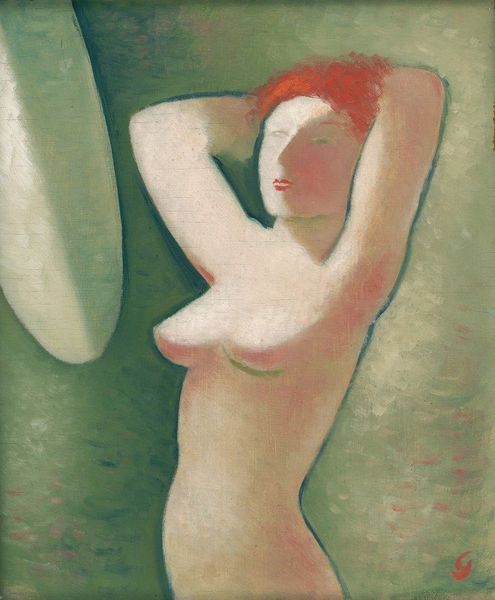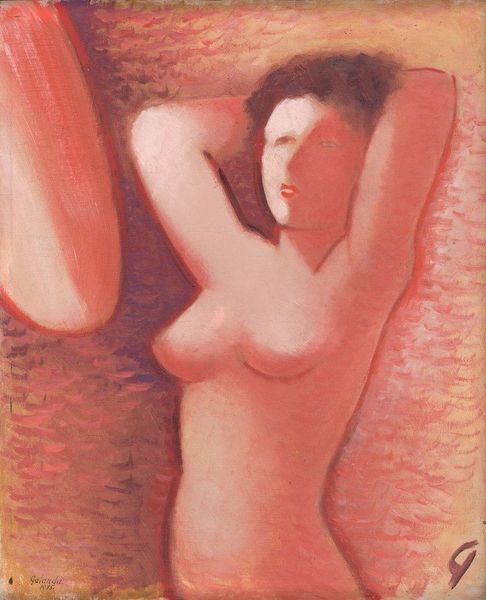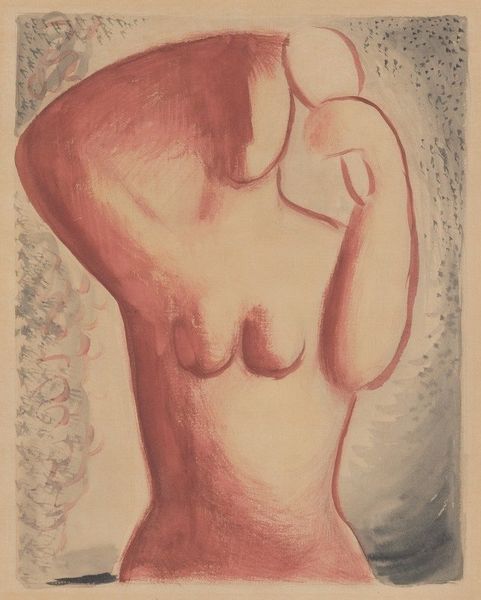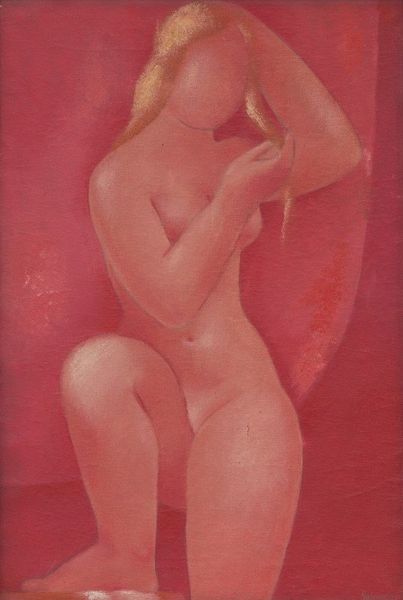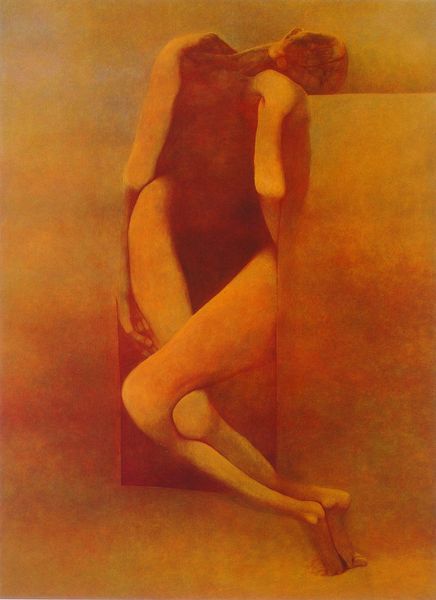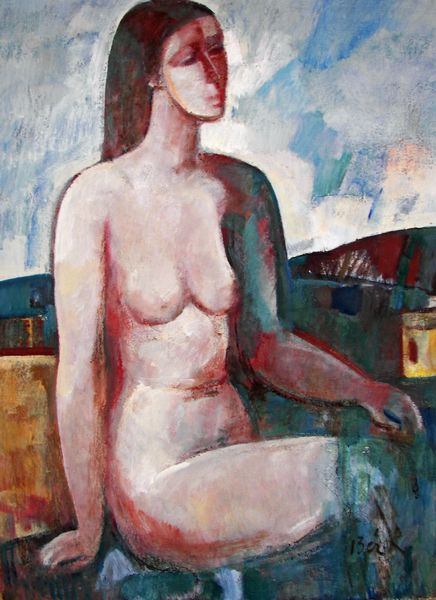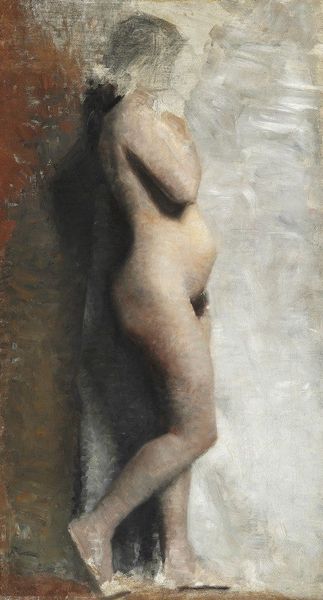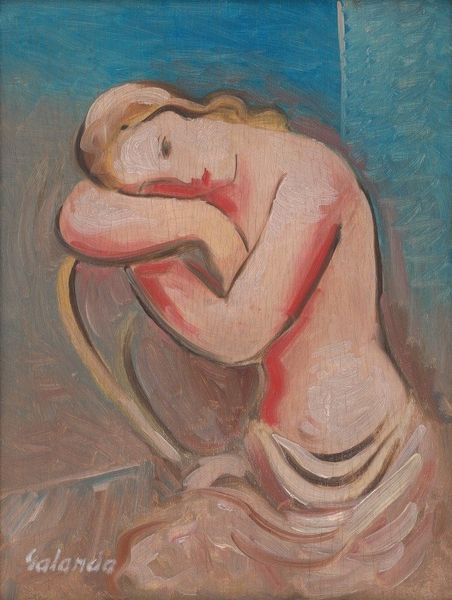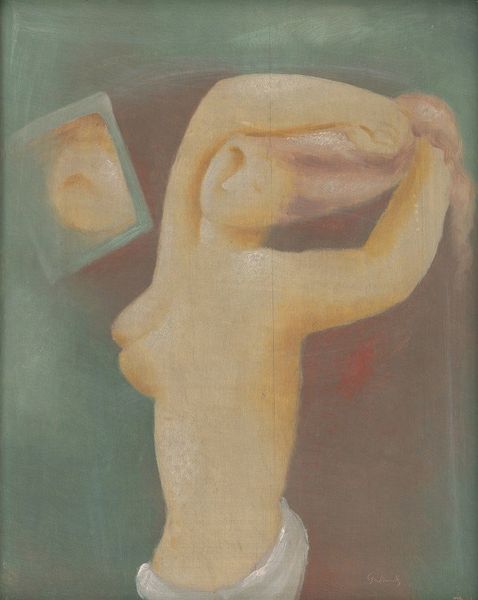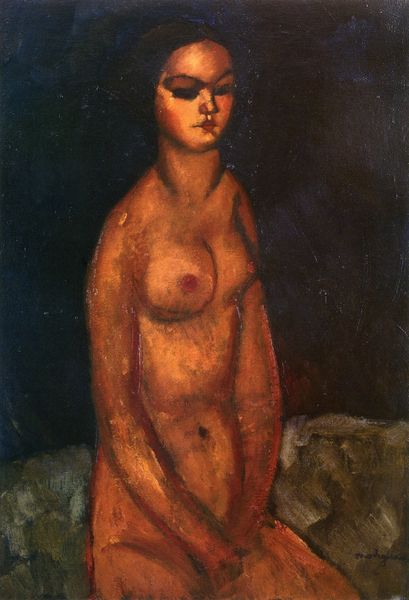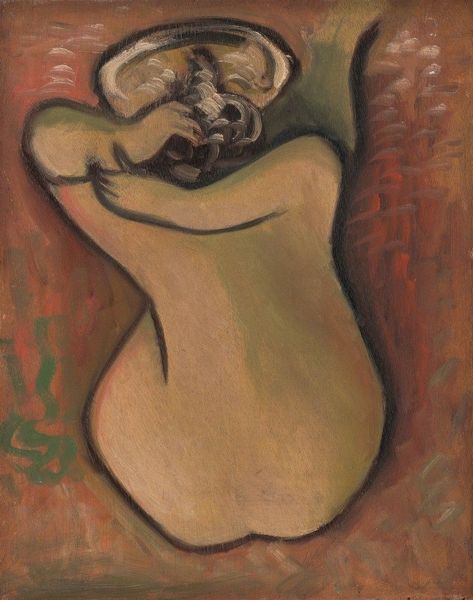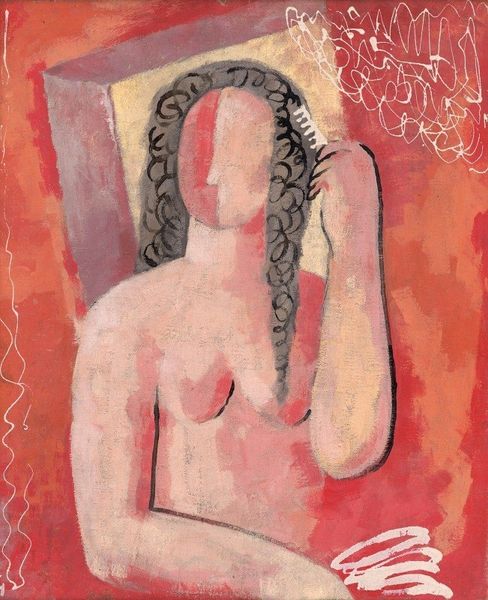
Copyright: Public Domain: Artvee
Editor: So here we have Mikuláš Galanda’s "After Bath," created in 1936 using oil paints. The warm palette creates a sense of intimacy. How would you interpret the piece, especially considering the artist's choices in materials and technique? Curator: The very act of choosing oil paints places Galanda within a specific, historical mode of production – one tied to traditions of academic and salon painting, which, by 1936, were increasingly fraught. What’s striking is how he engages, or rather, disrupts that tradition through an expressionist handling of the medium. Notice the visible brushstrokes, the almost crude application of pigment; this isn't about illusionism. How do you think the rendering affects the reception of this very traditional subject in fine arts? Editor: I see what you mean about the visible brushstrokes. It makes it feel almost tactile, less idealized. Almost like raw, unfabricated artwork. But I do wonder, do these material choices then critique or maybe even just question that tradition? Curator: Exactly! Consider what it means to represent the nude body, a subject historically laden with power dynamics, through this consciously laborious process. The rough application of paint could be seen as a deliberate rejection of the smooth, flawless finish associated with academic nudes, suggesting a focus on the physical reality of the body and the very materiality of representation itself. Moreover, consider the cultural context of 1930s Europe; does this raw materiality align with any particular social or political movements of the time? Editor: That’s a lot to think about. I hadn't considered the painting in light of material choices reflecting political or social statements. Curator: It really underscores how seemingly simple choices, like the way paint is applied, can be loaded with meaning. Editor: This conversation has completely shifted my perspective; now I understand the complex layering of process and its deeper purpose.
Comments
No comments
Be the first to comment and join the conversation on the ultimate creative platform.
